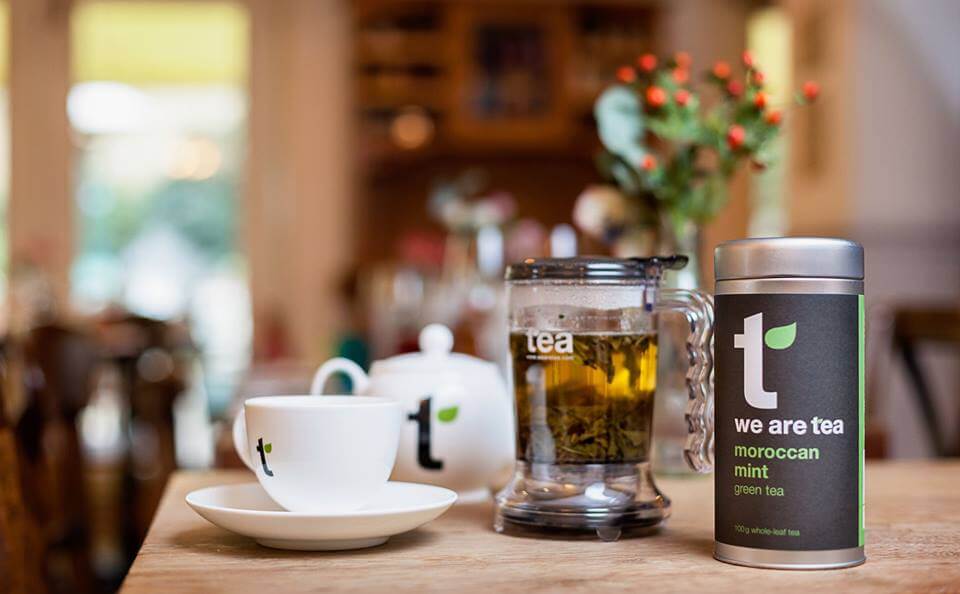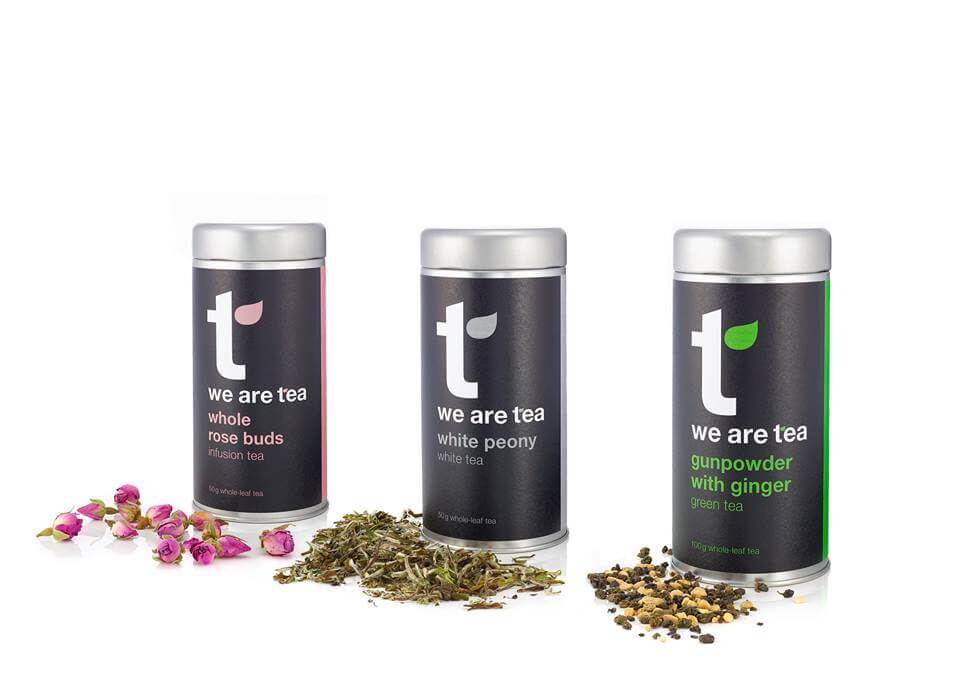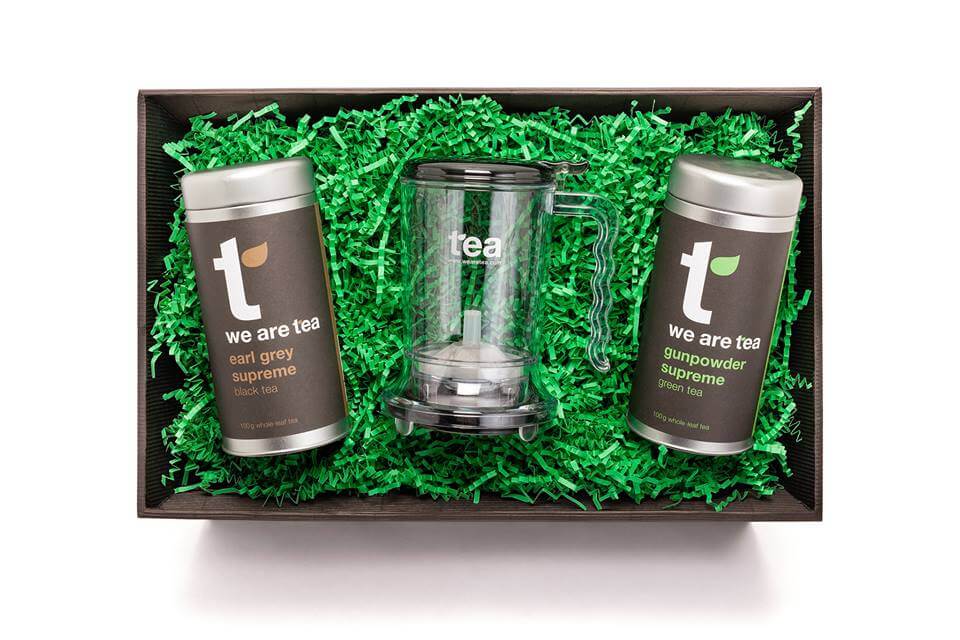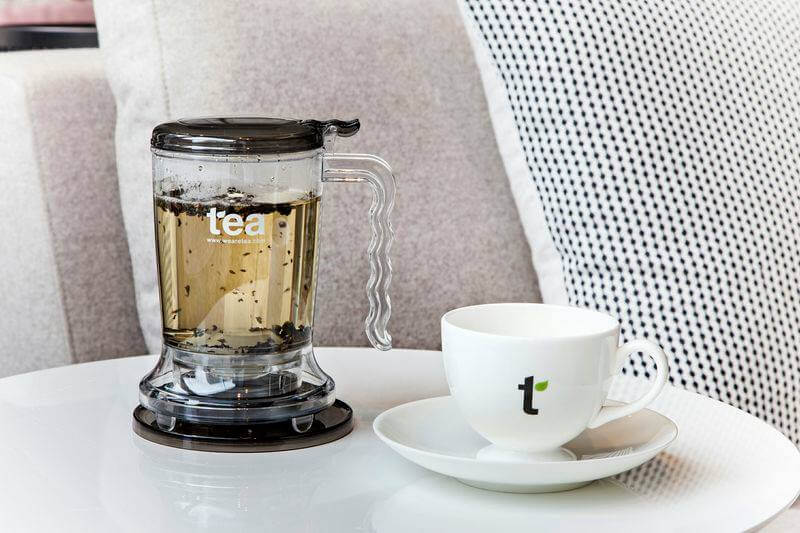About Time: You Learnt About the Benefits of Loose Leaf TeaBy Angelica Malin
In case you haven’t noticed, we’ve gone potty for tea this week. We’ve partnered up with our friends over at We Are Tea to uncover London’s best tea cocktails and how you can get creative with the humble tea leaf. We sit down with Spence, Founder of We Are Tea to discuss the benefits of using loose leaf tea. Someone pop the kettle on:
All teas come from the same plant, Camellia Sinensis. But not all teas are equal. There are two main processing methods and grades that define the quality and taste of the teas.
1. Orthodox tea is made of the finest unbroken leaves of each plant that are carefully picked, hand-shaped in different ways, and dried. This style of processing further enhances the taste of tea and so results in a high quality whole-leaf tea, ideal for loose leaf tea infusions. It contains more subtle multi-layered flavours and can be brewed several times, as well as provide higher level of antioxidants.
2. The CTC (Crush, Tear and Curl) tea is essentially made of tea dust and fannings that are passed through a series of cylindrical rollers that break the tea leaves. This produces finely ground, low quality tea used mostly for bagged tea. This process makes a tea with a stronger and harsher flavour, and does not retain most of the essential oils.
At We Are Tea, we take pride in sourcing and hand-picking the finest tea leaves, and to grind them down would be almost criminal. Opposed to the Crush, Tear, Curl (CTC) way, we handle the whole-leaf teas, herbs and flowers very gently so they retain more of the essential oils that give our tea its delicious, full and complex flavour as well as allow increased health benefits.
What is the secret to a perfect cup of tea?
Not to replace the great ‘A Nice Cup of Tea’ by George Orwell, we created our own seven-step guide to making the ultimate cup of tea. Follow this and you can’t go wrong!
1. Always use freshly drawn, cold water to make sure the oxygen content is at its best.
2. Always warm the pot beforehand.
3. Always add the right amount of loose leaf tea.
4. Always allow water to cool when brewing delicate teas.
5. Always steep for the right amount of time.
6. Always strain the tea leaves completely into a teapot or cup.
7. Always add the milk to the tea at the very end.
But to make it even easier to enjoy a perfect cup of loose leaf tea, we have a new Simplicitea infuser that means to can brew your tea in just 90 seconds and say goodbye to dusty tea bags forever!
Any health benefits to different loose leaf teas?
There are many health benefits to different loose leaf teas, including digestion-helper blacks, fat-burning oolongs and immune-boosting greens. Here are three of my favourite teas with benefits:
Pu-erh: This black tea from the Yunan province of China is highly fermented, and has a robust, earthy flavor
Yellow Gold Oolong: It provides for a moreishly sweet and honey-like tea which is difficult to fault and like all good oolongs, is full-bodied and complex
Gunpowder Supreme with Ginger: With a perfect balance of green tea and ginger, this blend is refreshing, reviving and inspiring
How can you incorporate loose leaf tea in different dishes?
Here at We Are Tea, we like to bring tea to life and use it in all sorts of recipes. We believe tea can do so much more than quench a thirst, tea leaves can be used in rubs, marinades, desserts, and much more.
A growing number of renowned chefs are including tea leafs to enhance the flavours of their dishes from Heston Blumenthal’s Earl grey pannacotta for Waitrose to Jamie Oliver’s pairing of green tea with salmon.
I’ve experimented with everything from incorporating into lamb tagines, creating earl grey infused shortbread and making rooibos cookies. Plus, a personal favourite of mine is to make a tea-infused sugar, all the flavour without the bits!







